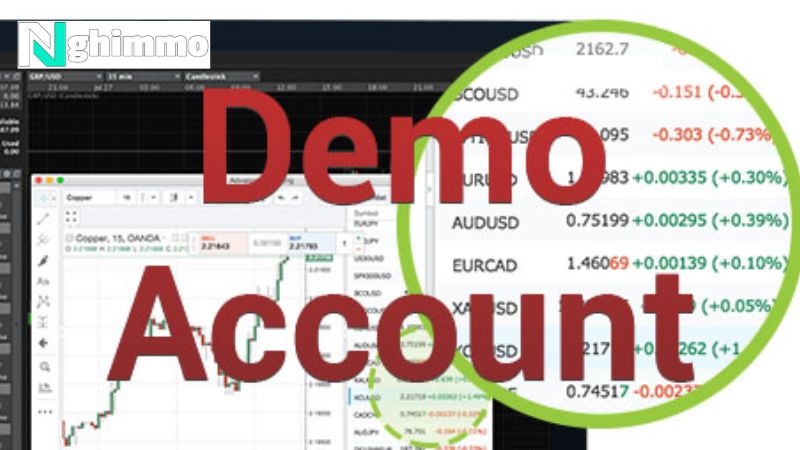Cryptocurrency trading has gained immense popularity in recent years, attracting both novice and seasoned investors. Learning how to navigate this volatile market can be both exciting and challenging. This guide from Nghimmo.pro provides a detailed roadmap on how to learn cryptocurrency trading, ensuring you build a strong foundation and develop the skills necessary for success.
How to Learn Cryptocurrency Trading
1. Educate Yourself on Cryptocurrencies

Understand the Basics
To learn cryptocurrency trading, start with understanding what cryptocurrencies are and the technology that powers them. Cryptocurrencies are digital or virtual currencies that use cryptography for security. The most well-known cryptocurrency, Bitcoin, was introduced in 2009 by an unknown person or group of people under the pseudonym Satoshi Nakamoto. Other popular cryptocurrencies include Ethereum, Ripple, and Litecoin.
Blockchain technology, the backbone of cryptocurrencies, is a decentralized ledger that records all transactions across a network of computers. It ensures transparency and security, making it difficult for any single entity to manipulate the system.
Resources for Learning
- Books: Consider reading “Mastering Bitcoin” by Andreas M. Antonopoulos for an in-depth understanding of Bitcoin and blockchain technology. “Cryptoassets” by Chris Burniske and Jack Tatar provides insights into the broader cryptocurrency market.
- Online Courses: Platforms like Coursera, Udemy, and Khan Academy offer comprehensive courses on blockchain and cryptocurrencies. These courses are a great way to systematically learn cryptocurrency trading.
2. Study Market Fundamentals
Market Dynamics
Understanding market dynamics is crucial to learn cryptocurrency trading. Market capitalization, trading volumes, and liquidity are fundamental aspects you need to grasp. Market capitalization refers to the total value of a cryptocurrency, calculated by multiplying its current price by the total supply in circulation. Trading volumes indicate how much of a cryptocurrency is being traded on various exchanges, which can give you an idea of its popularity and liquidity.
Key Concepts
- Technical Analysis: This involves analyzing price charts and using technical indicators to predict future price movements. Key indicators include Moving Averages, Relative Strength Index (RSI), and Bollinger Bands.
- Fundamental Analysis: This involves evaluating the underlying factors that affect a cryptocurrency’s value, such as its technology, team, market demand, and use cases. Understanding these fundamentals is essential when you learn cryptocurrency trading.
3. Choose a Reliable Exchange
Selecting an Exchange
When you learn cryptocurrency trading, choosing a reliable exchange is a critical step. Popular exchanges like Binance, Coinbase, Kraken, and Bitfinex offer a wide range of cryptocurrencies and have robust security measures. Ensure the exchange you choose has a good reputation, high liquidity, and strong security protocols.
4. Set Up a Digital Wallet

Types of Wallets
Digital wallets are essential for storing your cryptocurrencies securely. There are two main types of wallets:
- Hot Wallets: These are online wallets that offer convenience but are more susceptible to hacks. Examples include Coinbase Wallet and MetaMask.
- Cold Wallets: These are offline wallets, such as hardware wallets like Ledger and Trezor, which provide greater security.
Having a secure wallet is a fundamental aspect of how to learn cryptocurrency trading, as it protects your investments from potential cyber threats.
5. Learn Trading Strategies
Technical Analysis
To effectively learn cryptocurrency trading, you need to master technical analysis. This involves studying price charts and using various indicators to make informed trading decisions. Key technical indicators include:
- Moving Averages: These help smooth out price data to identify trends over a period.
- RSI (Relative Strength Index): This measures the speed and change of price movements, indicating overbought or oversold conditions.
- MACD (Moving Average Convergence Divergence): This trend-following momentum indicator shows the relationship between two moving averages of a security’s price.
Fundamental Analysis
Fundamental analysis is equally important when you learn cryptocurrency trading. Evaluate a cryptocurrency’s whitepaper, which outlines its purpose, technology, and roadmap. Investigate the development team, partnerships, and community support. Keeping abreast of news and developments is crucial, as these factors can significantly impact prices.
Trading Strategies
- Day Trading: Involves buying and selling cryptocurrencies within the same day. This strategy requires constant monitoring of the market and quick decision-making.
- Swing Trading: This involves holding positions for several days or weeks to capitalize on expected price movements.
- HODLing: This long-term strategy involves holding onto a cryptocurrency regardless of market volatility, based on the belief in its long-term potential.
6. Practice with a Demo Account

Simulated Trading
Before diving into real trading, use a demo account to practice. Many exchanges, like eToro, offer demo accounts where you can trade with virtual money. This allows you to practice strategies and understand the market without risking real money. Practicing with a demo account is a safe way to learn cryptocurrency trading.
7. Manage Risk
Risk Management
Effective risk management is vital when you learn cryptocurrency trading. Here are some key principles:
- Investment Limits: Never invest more than you can afford to lose. Cryptocurrencies are highly volatile, and significant losses can occur.
- Diversification: Spread your investments across different cryptocurrencies to mitigate risk.
- Stop-Loss and Take-Profit Orders: Use these tools to automatically close a trade at a certain loss or profit level, protecting your investments from severe market swings.
8. Stay Informed and Updated
News and Analysis
Staying informed is crucial to successful trading. Follow reputable cryptocurrency news sources like CoinDesk, CoinTelegraph, and CryptoSlate. Joining communities on platforms like Reddit (r/cryptocurrency), Twitter, and Telegram can provide valuable insights and updates from other traders and experts.
9. Start Trading with Real Money
Start Small
When you feel confident in your knowledge and skills, start trading with real money. Begin with a small investment to minimize risk. As you gain experience and confidence, you can gradually increase your investment. Remember, the goal is to learn cryptocurrency trading and develop a strategy that works for you.
10. Keep Learning
Continuous Improvement
The cryptocurrency market is dynamic and constantly evolving. To stay ahead, continuously educate yourself and adapt to new trends and changes. Regularly review and adjust your trading strategies based on your performance and market conditions. Join forums, attend webinars, and read the latest research to keep your knowledge up to date.
Additional Tips
Use Analytical Tools
Utilize tools like TradingView for advanced charting and analysis. These tools offer a wide range of indicators and drawing tools to help you make informed trading decisions.
Monitor Regulatory Changes
Regulations can significantly impact the cryptocurrency market. Stay informed about regulatory developments in your country and globally, as these can affect market conditions and your trading strategy.
Final Thought
By following these steps and consistently educating yourself, you can effectively learn cryptocurrency trading. Building a solid foundation, practicing with demo accounts, and continuously improving your knowledge and skills will set you on the path to becoming a successful cryptocurrency trader.
